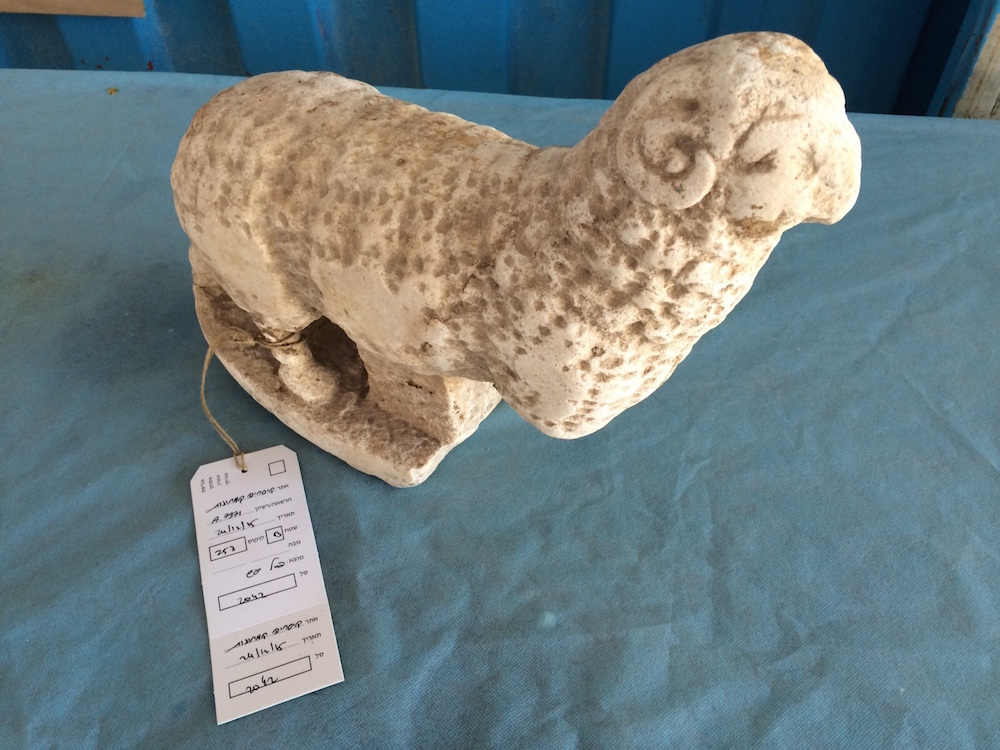Ram Statue Unearthed on Christmas Eve May Represent Jesus

A hand-carved marble statue of a ram that was uncovered last week along Israel's Mediterranean coast has archaeologists guessing about who carved the creation.
Archaeologists found the statue on Thursday (Dec. 24), but they say its unclear whether it was carved by Byzantine artisans, or if it was made by Romans and then later repurposed by the Byzantine church, the Israel Antiquities Authority said.
The researchers found the statue during the excavation of an ancient church in Caesarea Harbor National Park, a landmark about 25 miles (40 kilometers) south of Haifa. [The Holy Land: 7 Amazing Archaeological Finds]
"Caesarea never ceases to surprise, as evidenced by this amazing statue," Peter Gendelman and Mohammad Hater, directors of the excavation working on behalf of the Israel Antiquities Authority, said in a statement.
Despite the artifact's age, the original carvings can still be seen on the 1.3-feet-tall by 1-foot-long statue (40 centimeters by 30 centimeters). The ram's textured fleece and curly horns are visible, the archaeologists said.
It's possible that ancient artists carved the ram for religious reasons, the archaeologists said. In the New Testament of the Bible, there is a verse that refers to Jesus as a lamb: "The next day, he saw Jesus coming toward him, and said, "Behold, the Lamb of God, who takes away the sin of the world!"
Rams, along with lambs, are frequently used in Christian art to represent faithful Christians, or Jesus himself, the Israel Antiquities Authority said in a statement. Sometimes, ancient artisans depicted rams around the shoulders of Jesus. Other times, a ram is shown on the left or right of the "Good Shepherd," depicting how he tended to his flock.
Get the world’s most fascinating discoveries delivered straight to your inbox.
"In ancient Christianity, Jesus was not portrayed as a person," Gendelman and Hater said. "Instead, symbols were used, one of which was the ram."
However, other cultures also use ram images symbolically. Archaeologists have spotted rams alongside depictions of the Greek gods Hermes and Mercury in Roman art, as well as next to the Egyptian god Amun, a deity associated with Egypt's royalty.
"The statue that we found might have been part of the decoration of a Byzantine church from the sixth [to] seventh centuries C.E. at Caesarea," Gendelman and Hater said. "By the same token, it could also be earlier, from the Roman period, and was [later] incorporated in secondary use in the church structure."
Researchers have found other depictions of rams from archaeological digs in modern-day Israel, including a 9,500-year-old limestone ram with carved spiral horns that may have served as a lucky charm.
Follow Laura Geggel on Twitter @LauraGeggel. Follow Live Science @livescience, Facebook & Google+. Original article on Live Science.

Laura is the managing editor at Live Science. She also runs the archaeology section and the Life's Little Mysteries series. Her work has appeared in The New York Times, Scholastic, Popular Science and Spectrum, a site on autism research. She has won multiple awards from the Society of Professional Journalists and the Washington Newspaper Publishers Association for her reporting at a weekly newspaper near Seattle. Laura holds a bachelor's degree in English literature and psychology from Washington University in St. Louis and a master's degree in science writing from NYU.




